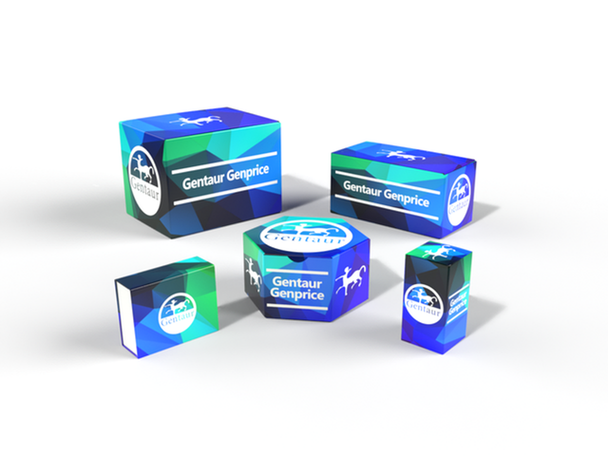Description
CLN8 Antibody | 26-399 | Gentaur UK, US & Europe Distribution
Host: Rabbit
Reactivity: Human, Dog
Homology: N/A
Immunogen: Antibody produced in rabbits immunized with a synthetic peptide corresponding a region of human CLN8.
Research Area: Membrane, Neuroscience
Tested Application: E, WB
Application: CLN8 antibody can be used for detection of CLN8 by ELISA at 1:12500. CLN8 antibody can be used for detection of CLN8 by western blot at 1 μg/mL, and HRP conjugated secondary antibody should be diluted 1:50, 000 - 100, 000.
Specificiy: N/A
Positive Control 1: Cat. No. 1201 - HeLa Cell Lysate
Positive Control 2: N/A
Positive Control 3: N/A
Positive Control 4: N/A
Positive Control 5: N/A
Positive Control 6: N/A
Molecular Weight: 33 kDa
Validation: N/A
Isoform: N/A
Purification: Antibody is purified by peptide affinity chromatography method.
Clonality: Polyclonal
Clone: N/A
Isotype: N/A
Conjugate: Unconjugated
Physical State: Liquid
Buffer: Purified antibody supplied in 1x PBS buffer with 0.09% (w/v) sodium azide and 2% sucrose.
Concentration: batch dependent
Storage Condition: For short periods of storage (days) store at 4˚C. For longer periods of storage, store CLN8 antibody at -20˚C. As with any antibody avoid repeat freeze-thaw cycles.
Alternate Name: CLN8, C8orf61, EPMR, FLJ39417
User Note: Optimal dilutions for each application to be determined by the researcher.
BACKGROUND: CLN8 is a transmembrane protein belonging to a family of proteins containing TLC domains, which are postulated to function in lipid synthesis, transport, or sensing. The protein localizes to the endoplasmic reticulum (ER) , and may recycle between the ER and ER-Golgi intermediate compartment. Mutations in this gene are associated with progressive epilepsy with mental retardation (EMPR) , which is a subtype of neuronal ceroid lipofuscinoses (NCL) . Patients with mutations in this gene have altered levels of sphingolipid and phospholipids in the brain. Childhood-onset NCL are a group of autosomal recessive progressive encephalopathies characterized by the accumulation of autofluorescent material, mainly ATP synthase subunit C, in various tissues, notably in neurons. Based on clinical features, the country of origin of patients, and the molecular genetic background of the disorder, at least seven different forms are thought to exist. CLN8 is characterized by normal early development, onset of generalized seizures between 5 and 10 years, and subsequent progressive mental retardation.This gene encodes a transmembrane protein belonging to a family of proteins containing TLC domains, which are postulated to function in lipid synthesis, transport, or sensing. The protein localizes to the endoplasmic reticulum (ER) , and may recycle between the ER and ER-Golgi intermediate compartment. Mutations in this gene are associated with progressive epilepsy with mental retardation (EMPR) , which is a subtype of neuronal ceroid lipofuscinoses (NCL) . Patients with mutations in this gene have altered levels of sphingolipid and phospholipids in the brain.






